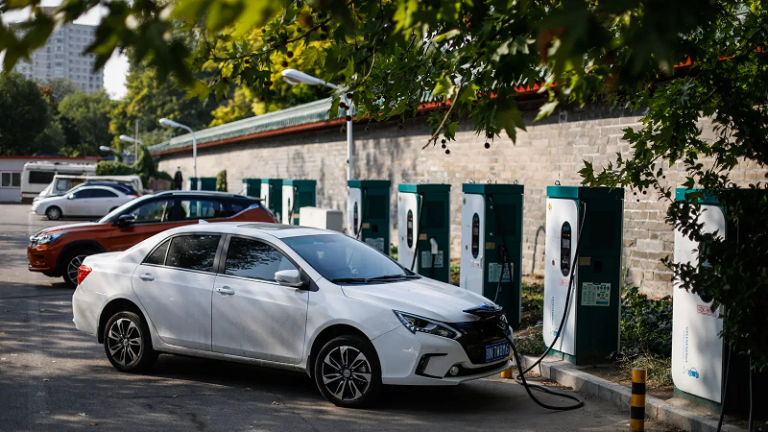
Winter weather can really hit electric cars hard when it comes to range—sometimes cutting it by 20% to 40%, depending on the conditions and how you use the vehicle. Cold temps mess with battery chemistry, slowing down the reactions that generate power, and then you’ve got extra energy drain from heating the cabin and defrosting windows.
Studies—like one from AAA a few years back—found that at 20°F (-6°C) with the heater on, range can drop by over a third compared to 75°F (24°C). Real-world data backs this up: Tesla Model 3 owners in Norway reported losing 20-25% in subzero weather, and that’s with a pretty efficient heat pump.
It’s not just the cold itself. Snow and slush increase rolling resistance, and if you’re stuck in traffic or blasting the heat full-on, the battery takes an even bigger hit. Preconditioning helps—warming the battery and cabin while plugged in—but once you’re on the road, you’re at winter’s mercy. Newer EVs, like the latest Teslas or the Rivian R1T, have better thermal management, but it’s still a universal Achilles’ heel for the tech.
Register for Tekedia Mini-MBA edition 19 (Feb 9 – May 2, 2026): big discounts for early bird.
Tekedia AI in Business Masterclass opens registrations.
Join Tekedia Capital Syndicate and co-invest in great global startups.
Register for Tekedia AI Lab: From Technical Design to Deployment (next edition begins Jan 24 2026).
Gas cars lose efficiency too—think 10-20% from cold starts and idling—but they’ve got waste heat from the engine to lean on, so it’s less brutal. EVs? No such luck. That’s why range anxiety spikes in places like Minnesota or Scandinavia in January. What’s your angle here dealing with this yourself or just curious how it plays out?
Lithium-ion batteries—the workhorse of EVs—have been getting steady upgrades. Energy densities climbed from about 250 Wh/kg in 2020 to 300-350 Wh/kg in commercial cells today, thanks to tweaks like higher nickel content in cathodes (e.g., NMC 811—nickel-manganese-cobalt in an 8:1:1 ratio) and silicon-rich anodes over graphite. Tesla’s 4680 cells, rolling out since 2023, pack more punch—around 20% better range per charge—and cut production costs with a tables design. Cold weather still bites, but better thermal management—like heat pumps and smarter insulation—keeps losses closer to 15-20% now instead of 40% in older models.
Solid-state batteries are the big hype. They swap liquid electrolytes for solid ones (ceramics or polymers), promising 400-500 Wh/kg—think 600-800 miles of range—and faster charging (10-80% in 15 minutes). Toyota’s got a prototype slated for 2027 with a sulfide-based electrolyte, while QuantumScape’s version, backed by VW, hit headlines in 2024 with lab tests showing 80% capacity retention after 800 cycles. Cold performance? Potentially better—less ionic resistance—but they’re not road-ready yet. Cost and scaling are the bottlenecks; don’t expect them in your garage before 2030.
Then there’s lithium-sulfur (Li-S). It’s lighter, cheaper, and theoretically hits 500-600 Wh/kg, blowing lithium-ion away. A 2024 breakthrough from Monash University stabilized the sulfur cathode with a polymer binder, pushing cycle life past 200—still short of lithium-ion’s 1,000+, but progress. Winter resilience isn’t fully tested, but the high energy could offset losses. It’s years out, though—commercial bets are thin.
On the fast-charging front, CATL’s Shenxing Plus battery, launched in 2024, does 1 km of range per second of charge (600 km in 10 minutes) via a lithium phosphate tweak. It’s in Chinese EVs now, and cold-weather charging dips less—maybe 25% slower at 0°C versus 50% for older packs. Pair that with 800V architectures (Porsche Taycan, Hyundai Ioniq 5), and charging infrastructure’s catching up—350 kW stations are more common in Europe and the U.S. by 2025.
Sodium-ion’s the dark horse. No rare metals, dirt cheap, and decent at 160-200 Wh/kg—half of lithium-ion but enough for city cars. CATL’s version powers budget EVs in China since mid-2024, and it laughs at cold weather: minimal capacity loss below freezing, unlike lithium’s sulkiness. Range tops out at 250-300 miles, so it’s niche, but it’s a lifeline for affordability.
Recycling and sustainability are advancing too. Redwood Materials is pulling 95% of lithium, cobalt, and nickel from old packs in 2025, feeding it back into new cells. It’s not a performance boost, but it cuts reliance on mining, which matters as EV demand spikes—global sales hit 18 million in 2024, per IEA.
Winter-specific fixes? Beyond heat pumps, some startups—like Michigan’s Our Next Energy (ONE)—are testing dual-chemistry packs: lithium-ion for power, paired with a high-capacity cell that resists cold better. Their Gemini prototype in 2024 claimed 600 miles total, with only 10% winter loss. It’s not mass-market yet, but it’s a glimpse of tailored solutions.



